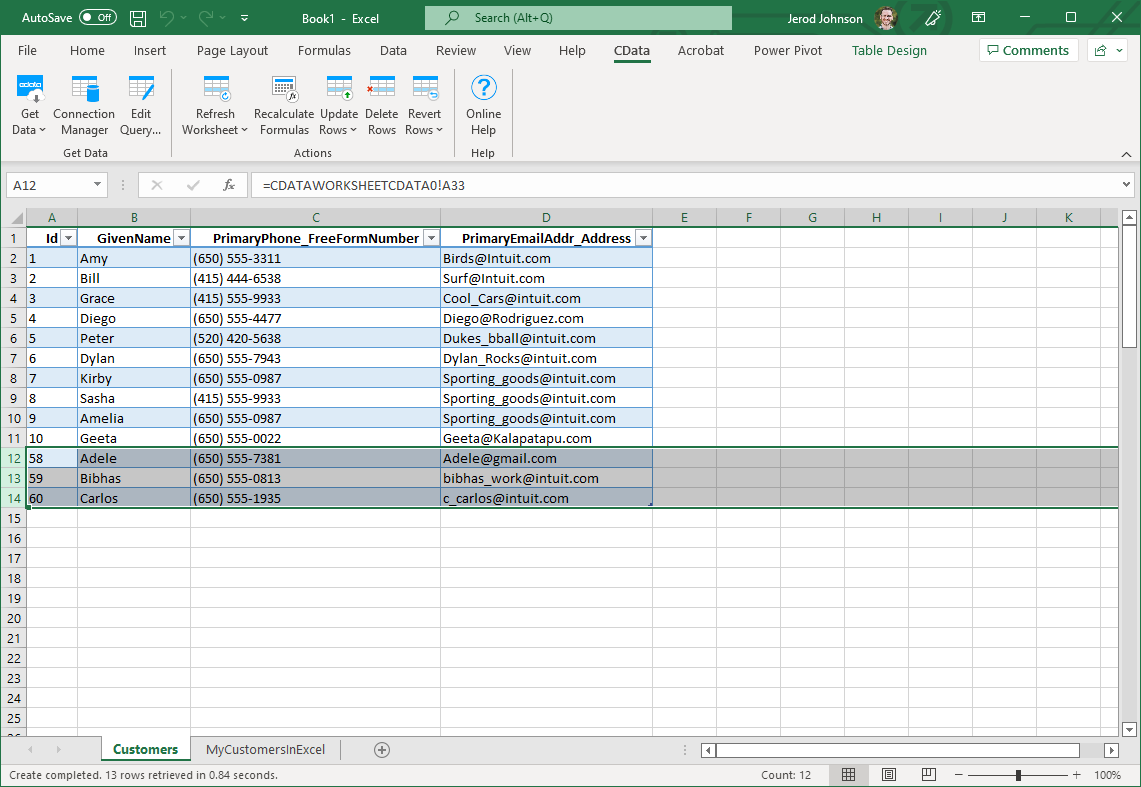Discover how a bimodal integration strategy can address the major data management challenges facing your organization today.
Get the Report →Transfer Data from Excel to Adobe Commerce
This article explains how to transfer data from Excel to Adobe Commerce using the Excel Add-In for Adobe Commerce.
The CData Excel Add-In for Adobe Commerce enables you to edit and save Adobe Commerce data directly from Excel. This article explains how to transfer data from Excel to Adobe Commerce. This technique is useful if you want to work on Adobe Commerce data in Excel and update changes, or if you have a whole spreadsheet you want to import into Adobe Commerce. In this example, you will use the Products table; however, the same process will work for any table that can be retrieved by the CData Excel Add-In.
Establish a Connection
If you have not already done so, create a new Adobe Commerce connection by clicking From Adobe Commerce on the ribbon.
Adobe Commerce uses the OAuth 1 authentication standard. To connect to the Adobe Commerce REST API, you will need to obtain values for the OAuthClientId, OAuthClientSecret, and CallbackURL connection properties by registering an app with your Adobe Commerce system. See the "Getting Started" section in the help documentation for a guide to obtaining the OAuth values and connecting.
You will also need to provide the URL to your Adobe Commerce system. The URL depends on whether you are using the Adobe Commerce REST API as a customer or administrator.
Customer: To use Adobe Commerce as a customer, make sure you have created a customer account in the Adobe Commerce homepage. To do so, click Account -> Register. You can then set the URL connection property to the endpoint of your Adobe Commerce system.
Administrator: To access Adobe Commerce as an administrator, set CustomAdminPath instead. This value can be obtained in the Advanced settings in the Admin menu, which can be accessed by selecting System -> Configuration -> Advanced -> Admin -> Admin Base URL.
If the Use Custom Admin Path setting on this page is set to YES, the value is inside the Custom Admin Path text box; otherwise, set the CustomAdminPath connection property to the default value, which is "admin".
Retrieve Data from Adobe Commerce
To insert data into Adobe Commerce, you will first need to retrieve data from the Adobe Commerce table you want to add to. This links the Excel spreadsheet to the Adobe Commerce table selected: After you retrieve data, any changes you make to the data are highlighted in red.
- Click the From Adobe Commerce button on the CData ribbon. The Data Selection wizard is displayed.
- In the Table or View menu, select the Products table.
- In the Maximum Rows menu, select the number of rows you want to retrieve. If you want to insert rows, you need to retrieve only one row. The Query box will then display the SQL query that corresponds to your request.
- In the Sheet Name box, enter the name for the sheet that will be populated. By default the add-in will create a new sheet with the name of the table.
Insert Rows to Adobe Commerce
After retrieving data, you can add data from an existing spreadsheet in Excel.
- In a cell after the last row, enter a formula referencing the corresponding cell from the other spreadsheet; for example, =MyProductsSheetInExcel!A1.
![A local copy of a table. One row will be inserted. (QuickBooks is shown.)]()
- After using a formula to reference the cells you want to add to Adobe Commerce, select the cells that you are inserting data into and drag the formula down as far as needed. The referenced values you want to add will be displayed on
the Products sheet.
![The range of changes to update. (QuickBooks is shown.)]()
- Highlight the rows you want to insert and click the Update Rows button.
As each row is inserted, the Id value will appear in the Id column and the row's text will change to black, indicating that the record has been inserted.









